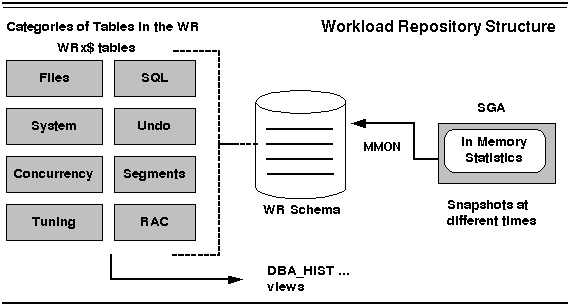
The frame_clause defines the frame of the current partition. The order_by_clause clause specifies the order of rows in each partition to which the NTH_VALUE() function is applied. If you skip it, the NTH_VALUE() function will treat the whole result set as a single partition. The query_partition_clause clause is not mandatory. The query_partition_clause clause divides the rows into partitions to which the NTH_VALUE() function is applied. This determines whether NULL is included in or eliminated from the calculation.

The NTH_VALUE() function will return NULL if the N th row does not exist. N must be a positive integer such as 1, 2, and 3. Specifies the N th row in the window frame defined by the frame_clause. Is any valid expression evaluated against the N th row of the window frame.
#Analytic functions oracle 10g code#
Please suggest better approach or solution to any of these issues.) Code language: SQL (Structured Query Language) ( sql ) Also,The existing transformers (AliastoBean) requires alias name for all the projection but having alias for projection is creating issue in query "where clause" the actual column names in the "where clause" are generated as alias causing Oracle query to fail) All joins and all WHERE, GROUP BY, and HAVING. pipelined function summary In this discussion of pipelined functions, I‘ve shown several scenarios where such functions (serial or parallel) can help you improve the performance of your data loads and. Analytic functions are the last set of operations performed in a query except for the final ORDER BY clause. Need to have result transformer to return list of vo (This is required to map totalcount to vo. Fortunately, this increases to somewhere between 100 and 150 columns in all major versions of Oracle Database 10g and Oracle Database 11g. Setting the all the properties in projection (Even though I require all the properties of class I need to specify all the property names in the projection list)Ģ. Select * from ( select this_.column1 as y0_, this_.column2 as y1_, this_.column3 as y2_,this_.column4 as 圓, count(*) over (partition by 1) as totalCount from table1 this_ where this_.GroupId in (?) and this_.status in (?, ?, ?, ?) and this_.UserId=? order by this_.UserId desc ) where rownum <= ?ġ. ProjectionsList.add(Projections.sqlProjection("count(*) over (partition by 1) as totalCount", The RANK() function is useful for top-N and bottom-N queries. Therefore, the ranks may not be consecutive numbers. It adds the number of tied rows to the tied rank to calculate the next rank. The RANK() function returns the same rank for the rows with the same values. ProjectionsList.add(Property.forName("column4")) The RANK() function is an analytic function that calculates the rank of a value in a set of values. ProjectionsList.add(Property.forName("column3")) ProjectionsList.add(Property.forName("column2"))

ProjectionsList.add(Property.forName("column1")) I'm able to achieve this by using sqlProjection
#Analytic functions oracle 10g how to#
I cannot use named query since these are all dynamically generated by criteria so Please suggest how to add this feature to hibernate criteria (suggest options like extending dialect, using formula mapping) Select * from ( select this_.column1 as column1_0_, this_.column2 as column2_0_, this_.column3 as column3_6_0_, count(*) over (partition by 1) as totalcount from table1 this_ where this_.GroupId in (?) and this_.status in (?, ?, ?, ?) and this_.UserId=?) where rownum <= ? Predicate Pushing And Analytic Functions Posted on by David Aldridge I'm sure that there must be a fair number of Oracle professionals who carry around in their heads a little score card of some of their best tuning results ever hopefully, at least, 'cos otherwise I'm a weirdo. The Oracle Database 12c is an enterprise-class database that is noted for its high-performance, result-oriented tools, and features. Along with other tools and features, Oracle 10g provides an application server and a DBMS.

I want to combine this two queries together using oracle 10g analytic function What is the difference between Oracle 10g and 11g and 12c database, Oracle 10g is a computing product group belonging to Oracles grid. Where this_.GroupId in (?) and this_.status in (?, ?, ?, ?) and this_.UserId=?) where rownum <= ? Select * from ( select this_.column1 as column1_0_, this_.column2 as column2_0_, this_.column3 as column3_6_0_ from table1 this_ Select count(*) as y0_ from table1 this_ where this_.GroupId in (?) and this_.status in (?, ?, ?, ?) and this_.UserId=? TotalCount=(Integer) tProjection(Projections.rowCount()).uniqueResult()

The following are the queries generated by the hibernate.ĬtResultTransformer(Criteria.PROJECTION) I’m using hibernate criteria with pagination option for fetching results and using projections for getting result count. I’m using Hibernate 3.x, Oracle 10g in our application.


 0 kommentar(er)
0 kommentar(er)
